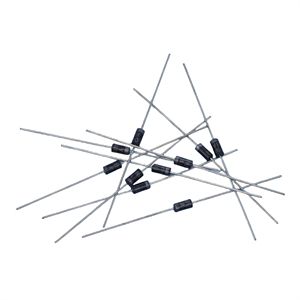Date:2024-10-09 Categories:Product knowledge Hits:328 From:Guangdong Youfeng Microelectronics Co., Ltd
What should be noted when diodes are connected in series or parallel?
What should be paid attention to when diodes are in series and parallel in electronic circuits?
A diode, in electronic components, is a device with two electrodes that allows current to flow in only one direction. Many uses it for rectification purposes. The most common function of diodes is to only allow current to flow from a single source
Forward bias (referred to as forward bias) and reverse bias (referred to as reverse bias). Therefore, diodes can be thought of as electronic versions of check valves.
The parallel connection of diodes is to increase the output current. When the maximum output current of a single diode is not enough, diodes can be connected in parallel. When diodes are connected in parallel, consistent parameters should be used, and it is best to connect current sharing resistors in parallel at both ends of each diode.
The series connection of diodes is to improve the withstand voltage value. When the voltage resistance of the diode is insufficient, the method of connecting diodes in series can be used to solve the problem. When diodes are connected in series, diodes with consistent performance should also be used. It is best to connect a voltage equalization resistor. Usually choose 10K per volt.
The voltage equalization resistor and current equalization resistor are used to prevent damage to a diode caused by inconsistent diode performance. If there is not much difference in performance parameters, it is not necessary.

Previous: Classification, Structure, and Principle of MOSFET
Next: Using voltage inspection method to quickly locate fault points in integrated circuits